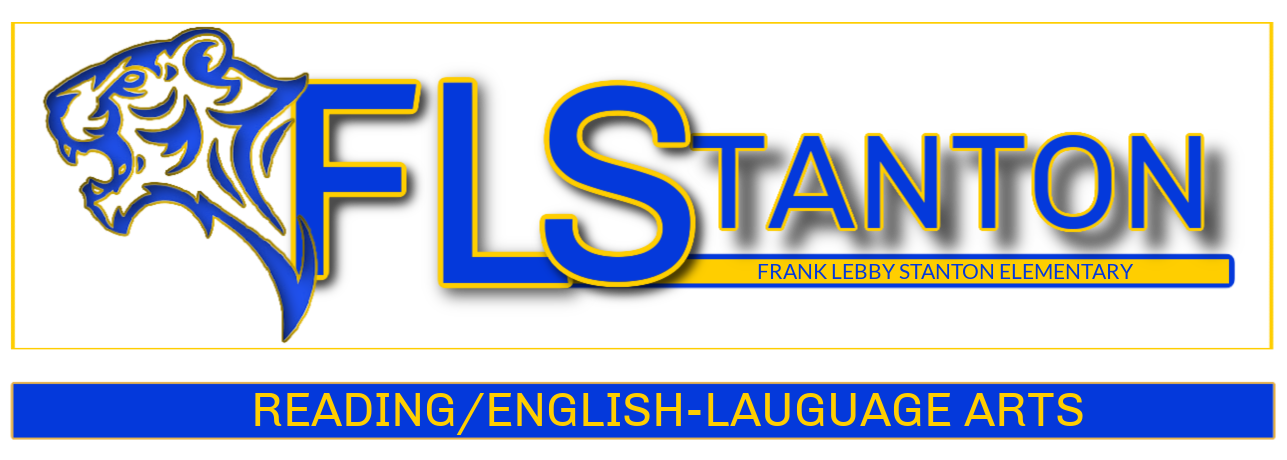-

Frank Lebby Stanton Elementary School uses Fountas and Pinnell for the ELA core
curriculum, with supplemental support from the APS Literacy Plan, Ready
Reading, iReady, Phonics - Orton Gillingham, Renaissance Learning, ScholasBc
Books, Coach Digital, Read Theory, and ReadWorks. The Lucy Calkins WriBng Units
of Study is the core wriBng curriculum.Balanced Literacy Instruc7onal Framework
➢ InteracBve Read Aloud (above grade level text) - Both the teacher and the
students acBvely process the language, ideas, and meaning of the text.
➢ InteracBve WriBng - During interacBve wriBng, the teacher and students
compose a text together. The teacher coaches the students during the
composiBon as different students take part in the wriBng. The teacher and
students co-write the text. InteracBve wriBng should engage students in
composing and learning about different genres
➢ Shared Reading- Teachers purposely choose a grade level text that
facilitates the acquisiBon of standards - based skills or concepts. Teacher
reads the text aloud once (model reading). The teacher and students read
aloud together.
➢ Shared WriBng - Teachers and students also compose a text together;
however, the teacher keeps the “pen” and writes the text in front of the
students enlarged on an easel or projected for all students to see.
➢ Guided Reading- Guided reading allows teachers to create differenBated
small groups to deliver reading instrucBon at a student's instrucBonal
reading level. The guided reading instrucBonal context provides an
opportunity for responsive teaching and enables students to read more
challenging texts with support from the teacher.
➢ Guided WriBng - Teachers pull together a small group of students with
similar levels of wriBng ability or a group that needs the same strategy
lesson. The teacher teaches the group a strategy that addresses their
common needs and reduce the scaffolding as the group works together.➢ Independent Reading - Each reader selects a book and is free to choose
books. Teachers intenBonally moBvate and pique students’ interest by
previewing or showcasing texts from a larger collecBon of books (classroom
library), and support students’ text selecBons through reading conferences
and whole group mini-lessons.
➢ Independent wriBng- Students should have the opportunity to write
independently in order to develop their own wriBng pieces. Through
independent wriBng, students explore mulBple genres and topics for a
variety of audiences. Teachers purposefully plan lessons that are coherent
and lessons that support the acquisiBon of wriBng skills and proficiency.
➢ Word Study- From early literacy concepts, where students receive explicit
and systemaBc instrucBon in phonemic awareness and phonics, to applying
word structure concepts, teachers intenBonally plan for word study in the
classroom during whole group and small group seXngs. For K-2 students,
word study should provide an opportunity for students to develop an
awareness of rhymes, syllables, onsets and rimes. For 3-5 students, an
emphasis on morphology, word affixes, Greek and LaBn roots are integral in
building vocabulary and expanding students’ language for use in speaking,
listening, and wriBng.
Select a School...
Select a School
- APS Back-to-School
- Equity
- APS Department of Athletics
- APS Human Resources
- APS Strong Schools
- Atlanta Board of Education
- Atlanta College and Career Academy
- APS Division of Finance
- Barack & Michelle Obama Academy
- Beecher Hills Elementary School
- Benjamin E. Mays High School
- Bolton Academy
- Booker T Washington High School
- Brandon Elementary School
- Burgess-Peterson Academy
- Carver Early College
- Cascade Elementary School
- Cleveland Avenue Elementary School
- Continental Colony Elementary School
- Coretta Scott King Young Women's Leadership Academy
- Daniel McLaughlin Therrell High School
- DT Howard Middle School
- Deerwood Academy
- Division of Academics
- Dobbs Elementary School
- Dunbar Elementary School
- Rivers Elementary School
- Hutchinson Elementary School
- Family Engagement
- Fickett Elementary School An International Baccalaureate School
- Finch Elementary School
- Frank L. Stanton Elementary School
- Toomer Elementary School
- Frederick Douglass High School
- Benteen (Frederick Wilson) Elementary School
- Garden Hills Elementary School
- Graduation
- Harper Archer Elementary School
- Heritage Academy
- Herman J. Russell West End Academy
- HLHANBA
- Hollis Innovation Academy
- Hope-Hill Elementary School
- Humphries Elementary School
- Jean Childs Young Middle School
- John Lewis Invictus Academy
- Kimberly Elementary School
- Kindezi at Gideons Elementary School
- KIPP Woodson Park Academy
- Long Middle School
- M. Agnes Jones Elementary School
- King Middle School
- Mary Lin Elementary School
- Maynard Holbrook Jackson High School
- Midtown High School
- Miles Elementary School
- Morningside Elementary School
- Virginia-Highland Elementary
- North Atlanta High School
- Nutrition Services
- Safety
- Office of Schools
- Parkside Elementary School
- Performance and Information Technology
- Perkerson Elementary School
- Peyton Forest Elementary School
- Phoenix Academy
- Price Middle School
- Bunche Middle School
- Sarah Smith Elementary School
- Scott Elementary School
- T.H. Slater Elementary School
- South Atlanta High School
- Springdale Park Elementary School
- Carver STEAM Academy
- SummerAPS
- Sutton Middle School
- Sylvan Hills Middle School
- BEST Engineering, Science and Technology
- Transportation
- Tuskegee Airmen Global Academy
- Usher-Collier Elementary School
- Facilities Service Center
- Jackson Elementary School
- West Manor Elementary School
- Boyd Elementary School
- Cleanup Archive
- APS Training/Testing Site
- New Subsite 120

